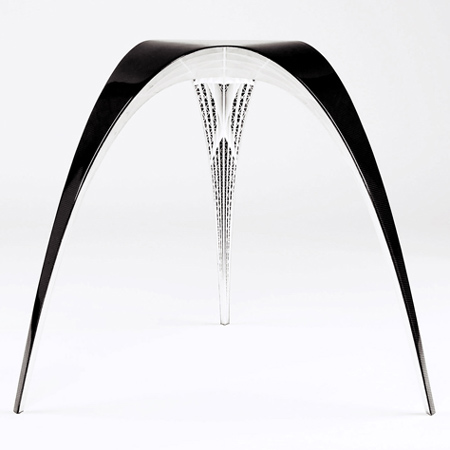
Gaudi Stool by Studio Geenen
Utrecht designer Bram Geenen of Studio Geenan has designed a stool based on the shape of hanging chains.
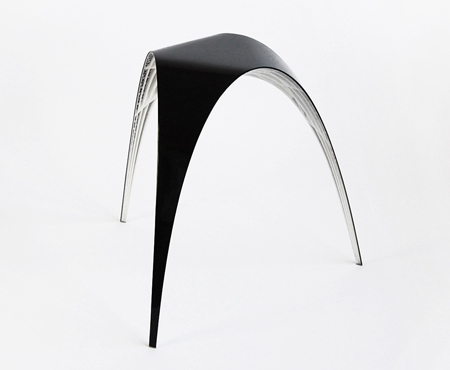
Called Gaudi Stool because it was inspired by architect Antoní Gaudi's method of designing structures for churches, the stool weighs one kilogram.

The grid-like structure of the underside was made of rapid-prototyped polyamide and covered in a carbon-fibre shell.
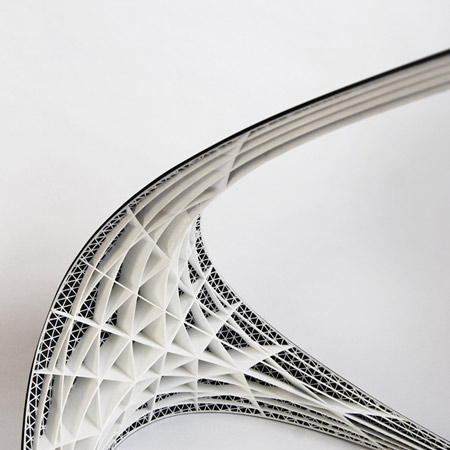
Here's some more information from Studio Geenen:
--
Gaudi Stool
The shape of the Gaudi Stool was created in the same way that Antoní Gaudi designed the structure of his churches, by making a model of hanging chains, so letting gravity determine the strongest and most logical shape for withstanding forces.
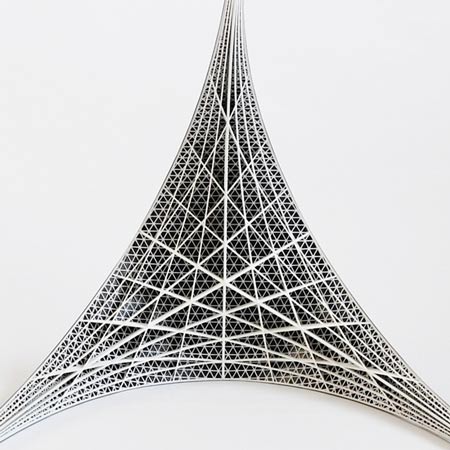
The Gaudi-stool was part of the furnistructure project. In the Furnistructures project was researched how lightweight products can be designed. Lightness has a lot advantages, in the use of products and their impact on the environment. This has lead to a research into structural systems, as found in nature and architecture, and the possibilities of designing lightweight furniture using such systems.
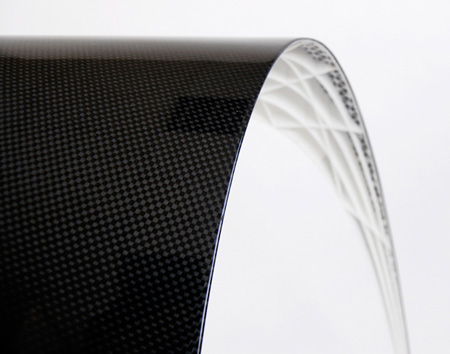
Materials & techniques:
A thin shell made of carbon fiber deals with the compressive forces. A beam-grid substructure resists bending of the shell. The substructure was made using rapid-prototyping techniques, in order to achieve the needed complexity. The rapid-prototyped structure was then used as a mold for the carbon-fiber laminates. This combining of these two high-tech techniques decreased costs of both of them, and made them applicable in a product.
Gaudi-stool:
carbon-composite, polyamide. 1kg.
The project includes a series of designs for furniture.
Of these unrealized designs, the Gaudi-chair is currently being developed in cooperation with Dutch research institute TNO